The Top 10 Places to Visit in Kasol, Himachal Pradesh, will be discussed in this article. Kasol, in the state of Himachal Pradesh, Kullu district, has earned the nickname “Amsterdam of India” due to its beautiful rivers and relaxed atmosphere. Kasol is a popular destination for hikers, travelers, and environmental enthusiasts, and its popularity is on the rise. The valley is famous for its picture-perfect evergreen trees and pure mountain streams, and it begins at the meeting of the River Parvati and the River Beas. Kasol, which is near to the holy town of Manikaran and only 23 kilometers from Bhuntar, is one of the greatest spots in the country to relax and take in the sights of snow-capped mountains, pine trees, and a babbling river.
A large number of Israelis reside in Kasol, as seen by the presence of Israeli cuisine and the Hebrew street signs. There is never a bad time to visit Kasol because of the consistently lovely climate. The months of March through May are ideal for a trip to Kasol. Here are the Top 10 Places to Visit in Kasol, Himachal Pardesh
- Manikaran
- Parvati Valley
- Kheer Ganga
- Manikaran Hot Springs
- Tosh Village
- Tirthan Valley
- Chalal Village
- Malana Village
- Naggar Village
- Pulga Village

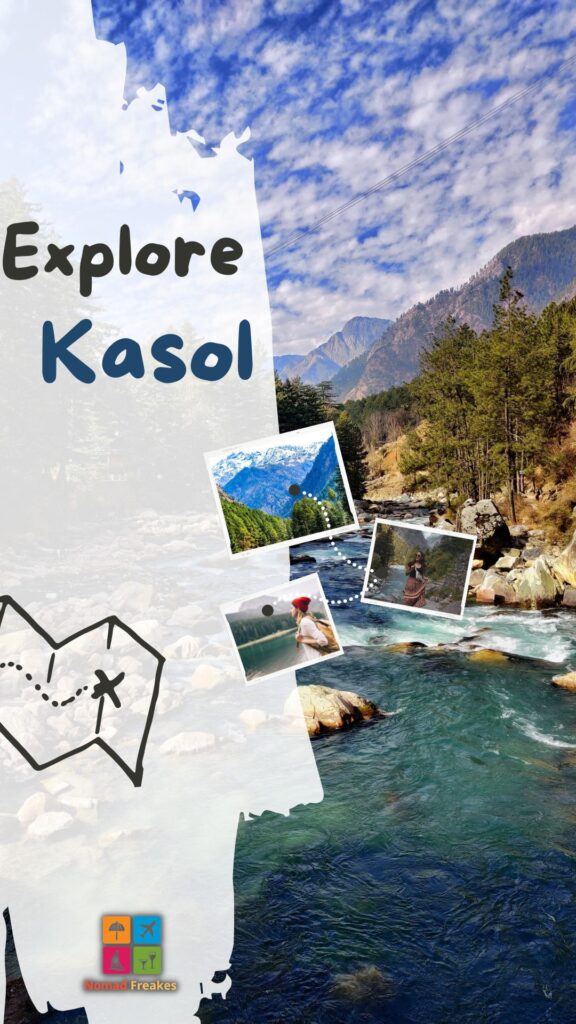













Manikaran Sahib
Manikaran is located in Himachal Pradesh‘s Kullu District, along the banks of the Parvati River, northeast of Bhuntar. It is located roughly 40 kilometers from Bhuntar and has an elevation of 1760 meters. On a list of the Top 10 Places to Visit in Kasol, Himachal Pardesh, Manikaran Sahib is ranked first.
Pilgrims from both the Hindu religion and the Sikh religion visit Manikaran. Since Hindus believe that Manu was responsible for repopulating the Earth with humans after the Great Flood, they keep the Manikaran region in the highest regard. It is home to a number of temples as well as a Gurudwara. Temples honouring Rama, Krishna, and Vishnu, three major Hindu deities, can be seen all over India. The region is well-known for its stunning landscape and therapeutic hot springs.
When the Hindu god Shiva and his bride Parvati were strolling through the valley, the legend goes, Parvati accidentally let go of one of her earrings and it fell into the ground. Shesha, the serpent god, took possession of the jewel and vanished into the earth with it. Shesha only gave up the jewel after Shiva performed the cosmic dance, the Tandava, and blasted it up through the water. Apparently, people were still throwing diamonds into the river at Manikaran as late as the 1905 Kangra earthquake.














Parvati Valley
The Parvati River is an essential component of Himachal Pradesh‘s breathtaking Parvati Valley and plays an important role in the overall beauty of this area.The raging river has its source in the Man Talai Glacier, travels through the Parvati Valley to the north, and finally joins the Beas River close to Kulu.The Parvati River in Kasol is a must-see, despite the fact that it isn’t particularly a tourist destination.If you don’t want to get too close to the Parvati River, you can just sit on the rocks and listen to its rumbling sounds for a while, if not forever, at least for a while.
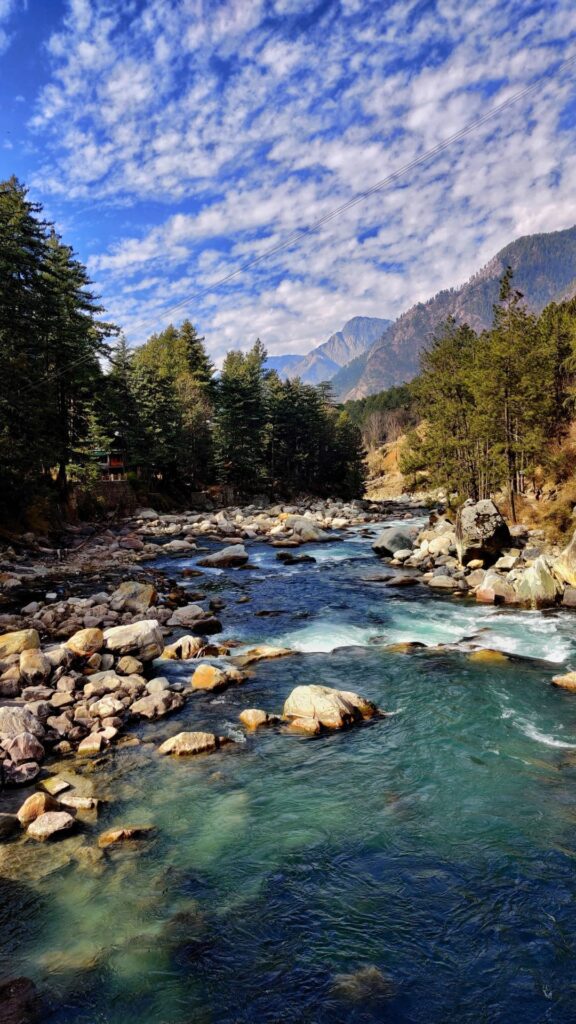

Without a doubt, many people like vacationing in Himachal Pradesh, and each one has a different motivation. When it comes to natural beauty and recreation, the Parvati Valley is hard to beat. This valley, which is often referred to as the Amsterdam of India, is unquestionably worthwhile. In addition, the valley is well-known in legend for being a destination for divine visitors and residents.












Kheer Ganga Peak
Kasol’s Kheer Ganga offers stunning views of the surrounding mountains, lush greenery, and blue skies.The skies are bluer and the hills are greener than usual at this sacred site, which is located at the far end of the Parvati Valley. Kasol’s Kheer Ganga trail is one of the region’s more beginner-friendly hikes. This is a chance that won’t come around again in your lifetime.
There are many myths and legends associated with Kheer Ganga, which you can learn about at the Lord Shiva Temple. The hot water plunge on this excursion has more surprises for you inside! In the midst of the snow, you can take a break and relax your aching muscles in the hot spring.
At the far end of the Parvati Valley in the Sylvan Hills, in the Himachal Pradesh region, is a stunning location known as Kheerganga (3500 meters), where it is thought that Lord Shiva meditated for a very long time. When Kartikeya’s father, Lord Shiva, lost a race to Ganesha, legend has it that he sat in meditation here for millennia. Then, in an effort to lure him back, Lord Shiva created a stream of kheer (rice pudding) to seduce Kartikeya.
From Kasol, you’ll get a taste of the Himalayas and the way of life of people who live in rural areas on your journey to Kheerganga. It is from Kasol, one of Pin Parvati Valley’s most popular tourist destinations, that hikers begin the Kheerganga trek. Ahead, it offers vistas of majestic peaks and nature at its best.












Manikaran Hot Springs
The hot springs of Manikaran, which have been shown to contain uranium and other radioactive elements, are came to believe to have curative properties. This water is so hot that it can even be used to boil rice. Tourists and pilgrims regard these hot springs as holy, making them popular attractions in the area.
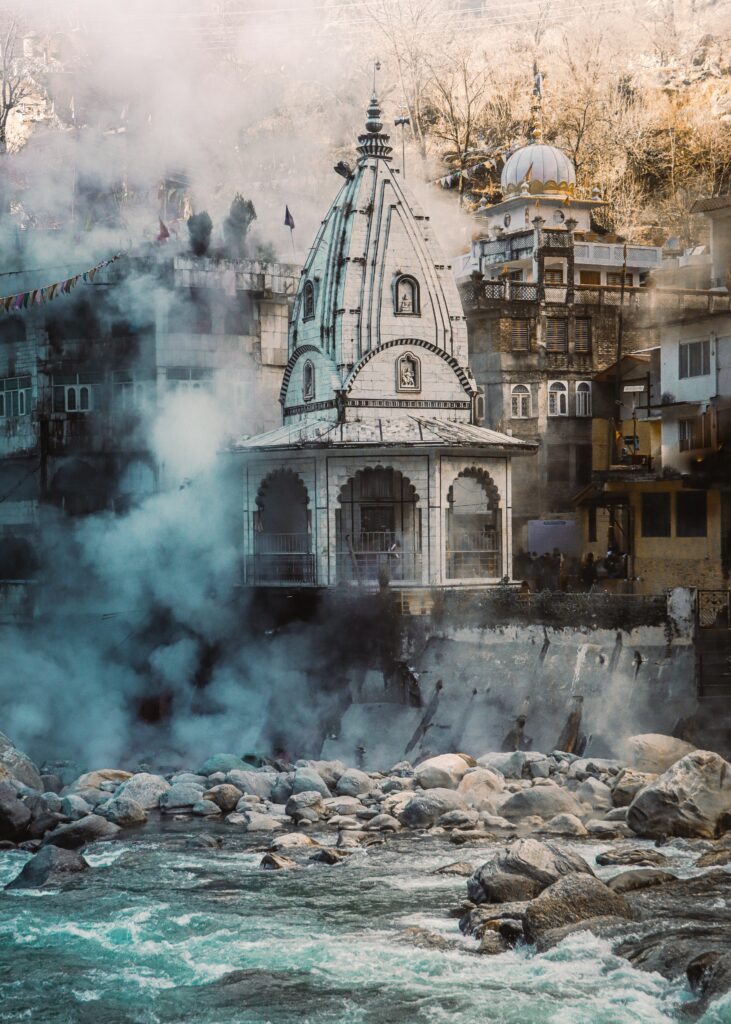

In 1574, Guru Nanak Dev Ji and Bhai Mardana visited the place during the third Udasi. The disciples then experienced hunger, yet they were without food. Guru Nanak told Mardana to go forage for food. Flour for making rotis at the langar was given by many people. Sadly, there was no fire to prepare the food. Dev Ji consequently asked Mardana to move a rock. A hot water spring formed when he raised the stone, but to his dismay, the chapatis sank. Instructed by Guru Nanak, he instructed him to hold the chapati and pray to God that if it floats, he will contribute one chapati in his honor. Consequently, the rotis began to float and were properly roasted.
Lord Shiva and Goddess Parvati were charmed by this location’s splendour. Those who hold these views believe that they have lived here for at least 1100 years. So, the goddess Parvati lost her precious jewel, or mani, in the stream while they were staying here. She appealed to Lord Shiva for help after becoming distraught over its absence. Then, God told his servant to bring the mani back. He opened his third eye because he was mad that they had failed. When this happened, a lot of damage was sure to happen. Sheshnag showed up and hissed a stream of boiling water at him to calm him down.












Tosh Village
A small village that situated on the riverbanks of the Tosh River is known as Tosh. Due to its picturesque beauty, Tosh, a unique attraction in Kasol, draws a large number of visitors from all over the country. It is located at the edge of the Parvati Valley. It sits at an elevation of 2,400 feet above the ground.
The walk along the Rivulet Tosh on the way to Tosh begins at the foot of Kheerganga and is one of the most beautiful in the valley. If you visit Tosh in the winter, when the trail and surrounding region are swept away in snow, you will feel as though you have been taken to a paradisiacal winter wonderland. Because of its outstanding serenity, both staying at At Tosh and making the ascent to Tosh are Kasol experiences that everyone should have at least once in their lifetime.
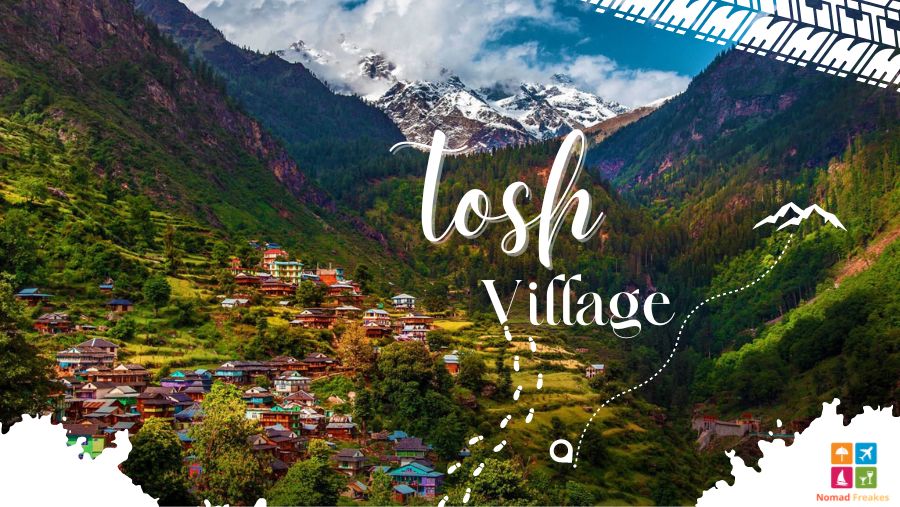

The majority of Tosh’s homes—about 99 percent—are made of wood. Locals live in these traditional homes. They’re stunning, and the greatest part is that travelers can stay in a few of them while on the road. The community only had three guest houses in 2010. Nearby Barsheini, which serves as a jumping off place for trips to Kheerganga, is Tosh. The Barsheini bus stop is around 500 meters away. As an added bonus, it provides an excellent perspective on Barsheini itself.
Jamdagni Rishi’s temple opens once a year in January or February. Temple is off-limits. Touching anything costs Rs 10,000. This waterfall features a genuine double rainbow. It’s en route to Kutla. Mountains and valleys surround this waterfall. It is a breathtaking sight to witness.












Tirthan Valley
Ingress to the Great Himalayan National Park is primarily through the Tirthan Valley (GHNP). In fact, the remote valley might have remained unknown if not for the creation of the park.


The Tirthan River, which has its source in the Great Himalayan National Park (GHNP) and empties into the Beas River at Larji, gives the valley its name. Tirthan Valley, also referred to as Himanchal’s best-kept secret, is a remote paradise located 60 kilometers from Kasol. The moment you arrive at this tourist spot in Kasol, you will find that it takes your breath away. The Great Himalayan National Park is a UNESCO World Heritage Site, and this park is located in Kasol. This serene and well-preserved neighborhood of Kasol is home to a wealth of things that you ought to check out while you’re there. Wild camping is one of our visitors’ favorite activities. This enables you to enjoy the Himalayan wilderness and spend the night under the stars without having to hike.
The short walks from Jalori Pass that offer breathtaking views of the Himalayan range are another fantastic pastime. The Tirthan valley, a delicate gem of Himachal Pradesh, might be at risk from excessive tourism. Himalayan Ecotourism encourages more responsible travel and provides environmentally friendly activities with a competent crew that is always available to assist you in order to preserve the area.












Chalal Village
A must-see is Chalal, a little Himalayan village with stunning views of snow-capped mountains and towering pine trees. It takes 30 minutes to walk from Kasol to Chalal, which is accessible to all Parvati Valley tourists. Chalal is the perfect destination for nature lovers who enjoy hiking through wooded areas and soaking in stunning panoramas. This small settlement in the Parvati Valley of the Himalayas is known as “Israel of Himachal Pradesh” due to its proximity to the region’s snow-capped mountains and stately pine trees.
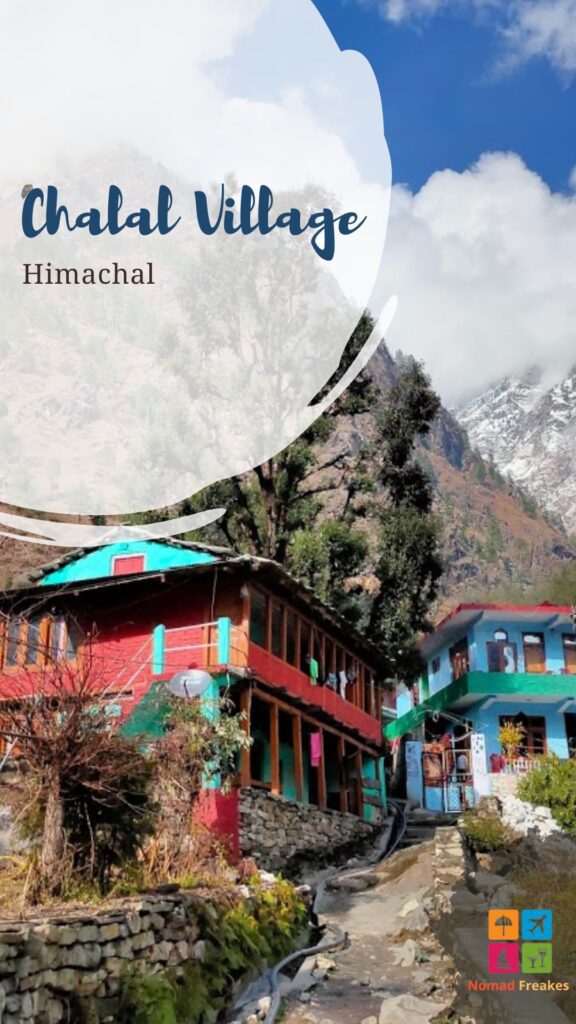

You will never tire of exploring the combined beauty of nature and cafes, as well as the abundance of psychedelic art and inventive sculptures in this location. The village of Parvati, located at an elevation of 5,366 feet above sea level, is a popular stop for lone travelers searching for a respite from their busy lives and a chance to recharge in the middle of the lush vegetation. This tiny village is a great destination for those who are looking for answers to unresolved questions.
In contrast to Kasol, Chalal has reasonably priced places to stay and eat. You have the option of staying in either hospitable homestays, hotels, or riverside campgrounds. While homestays will let you in for as little as $4, hotels and camps will charge you anywhere from $7 to $10. Travelers should be wary of the Parvati Valley due to stories of lost hikers and illegal activity by hashish mafias. These issues demand attention, but they primarily trouble remote regions. As a tourist destination, Chalal is home to a community of natives who rely on travelers for their livelihood. Chalal is safer than Amsterdam. If you want serenity and safety on a budget, consider Parvati Valley.












Malana Village
Mallana is an old village in Himachal Pradesh. It’s a haven for spiritual seekers due to its rich culture and religious values. This part of India consistently produces some of India’s finest cannabis. Malana Cream, the region’s most famous hashish strain, is known for its high oil content and powerful aroma. “The Malana Cream” is the most expensive hashish in Amsterdam.
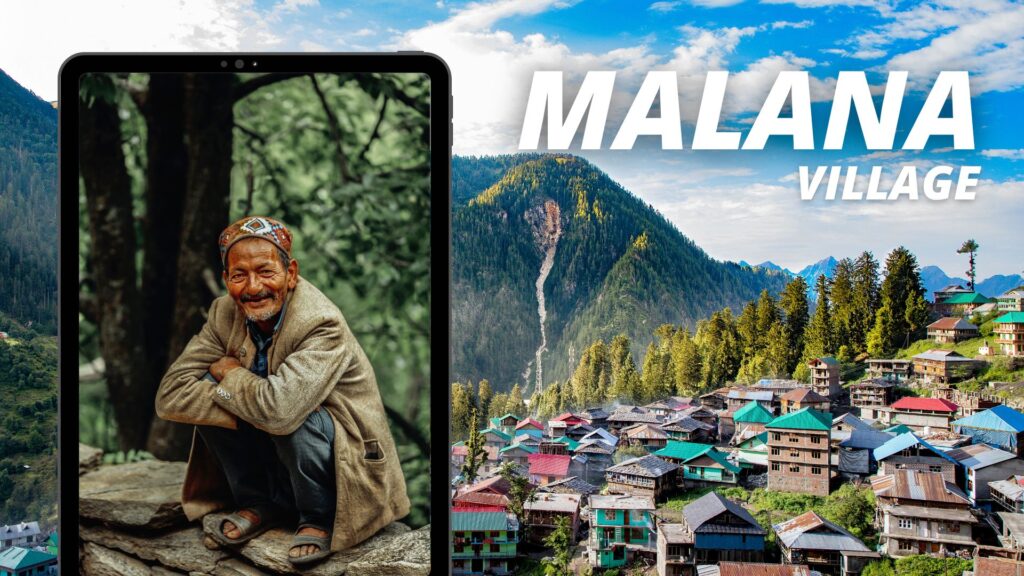

Many people think that the Malana people are the original Aryans. They got their independence from the Mughals when Akbar went there to get better. As it healed, he declared all valley residents tax-free. According to several sources, the surviving soldiers of Alexander the Great’s army stumbled upon Malana. The Malana Hydro Power Station has modernized the valley. In 2004, Delhi businessman Aryan Sharma adopted Malana. A fire that broke out in Malana in January 2008 was responsible for the destruction of various cultural sites, including historic temples.
From Kasol, Malana is about 21 km. A jeep carries you over the first 18 km, and then you trek uphill. But the climb up the frost-hardened slopes is still tough.












Naggar Village
Naggar is an ancient town in Himachal Pradesh’s Kullu region with a mystical aura. Its beauty stems from the snow-capped mountains, the razor-thin waterfalls, the tranquil atmosphere, and the majestic deodars that dot the landscape. The upper Beas area is sworn in on three sides by glaciers, the tallest of which reach an altitude of almost 7,200 metres (23,050 feet). The Malana valley is the most beautiful place in the area, and the journey to get there begins at the 3,700-meter-high Chanderkhani Pass.
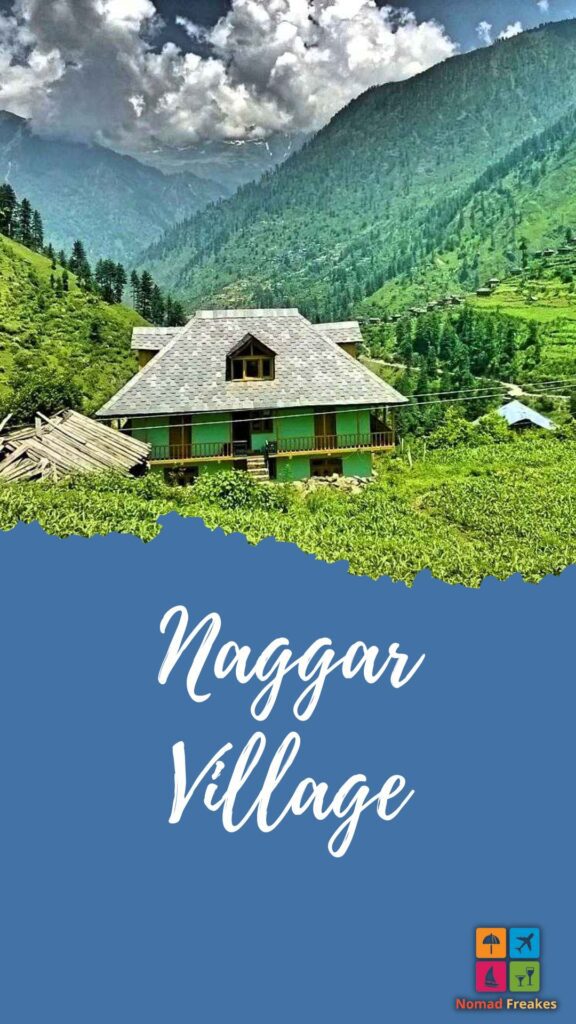

The community is home to a Roerich art gallery, a castle, ancient temples, and typical, century-old dwellings. The town is laid out like the leaves of a pipal tree, and it appears to unfold like a leaf on the slope of Han Peak. Naggar was the capital of Kullu about 1460 years ago, but the once-charming dynasty has since gone. The Naggar Castle, built in the 16th century, is a perfect example of this.
Even though the majority of people and government departments, such as the department of tourism, refer to Naggar as a “heritage village,” government departments have not yet received any notification that verifies this designation. The government offered to invest billions of rupees in restoring its historic buildings, cobblestone streets, temples, and castle so that it could become a popular tourist destination, but so far, nothing really has changed. There are no public restrooms, suitable sewer lines, or parking spaces in the village. The Russian painter, physicist, artist, and philosopher Nicholas Roerich introduced fame to the tiny village of Naggar when he settled there. This is where he painted thousands of well-known canvases and raised the flag of peace over the entire planet. Many well-known people have visited this place, including Jawaharlal Nehru, Indira Gandhi, and Atal Bihari Vajpayee.












Pulga Village
The Pulga Village awaits hikers interested in exploring strange locations. This Kasol tourist attraction is about 16 kilometers from Kasol and has plenty of tea gardens on the Himalayan side to tempt visitors. The small community, located at a height of 2,895 meters above sea level, features breathtaking temples that you must see. You can come here to spend the day unthreatened and far apart from the clamor of the modern digital world, reveling in the natural beauty that surrounds you.
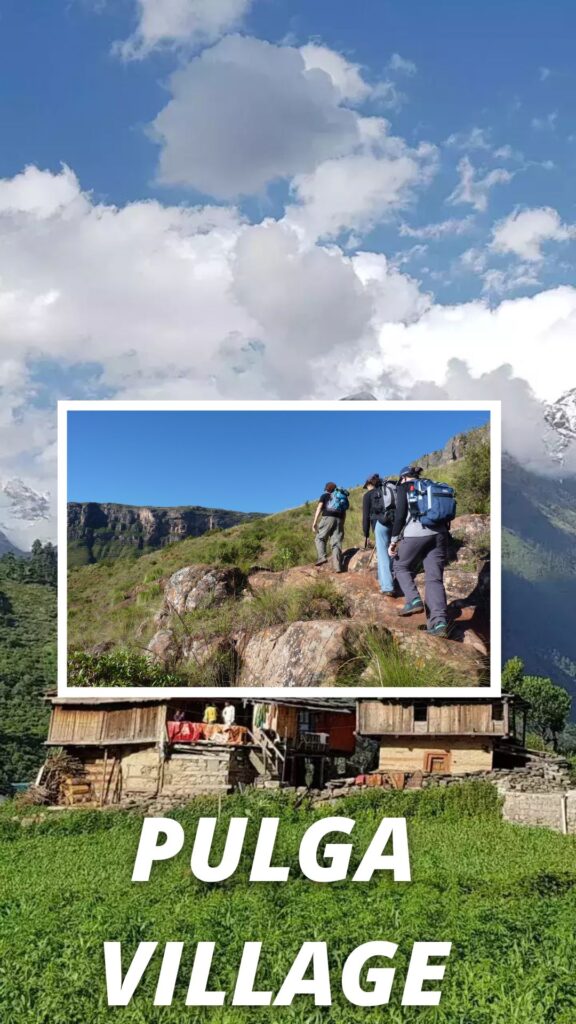

Still lacking in contemporary conveniences, this pristine community consists of towering mountains, tea plantations, and wooden homes. Finding yourself in Pulga Village will allow you to finally give yourself the “me time” you’ve been craving. You can’t drive to Pulga. It’s a 3-kilometer hike from Barsheini and is only accessible on foot. There is a waterfall not far from Pulga called Rudra-Nag because it resembles a water snake. I’m willing to wager that you will have the need to cram as much of the experience as you can into your bag.
Tea plantations dot the landscape, and farming and livestock raising provide the bulk of the local economy.Friendly locals make foreign visitors feel at home, and the few restaurants provide modest meals. Pulga’s natural beauty captivates visitors. Its wooden homes, tiny pillars, narrow lanes, and small town remind me of an Indian folktale. There are rows and rows of stunning blooms, and the rooftops are covered in corn that is drying off.
We hope you love this article “Top 10 Places to Visit in Kasol, Himachal Pardesh“
“My spirit soars where the air goes thin.”


NomadFreaks
Travel Enthusiast


